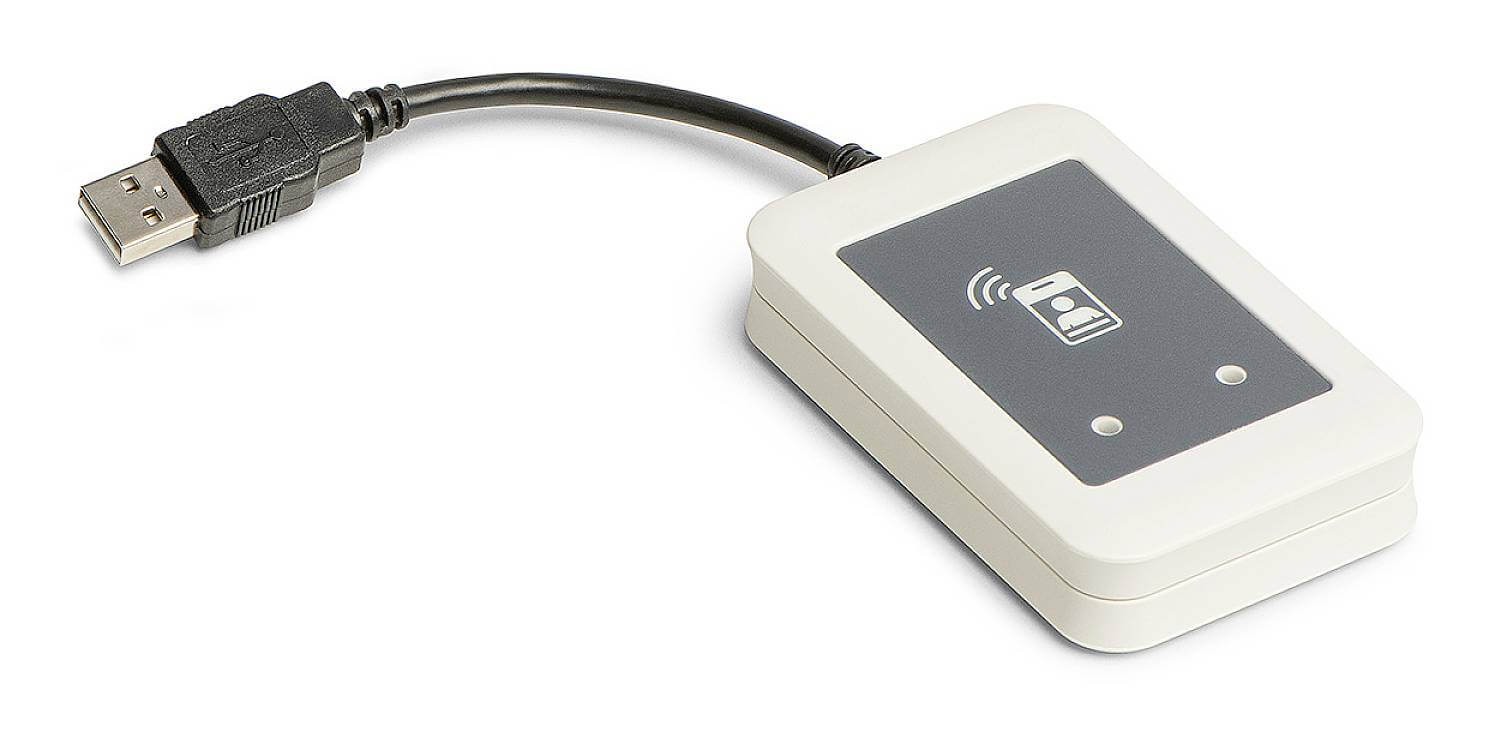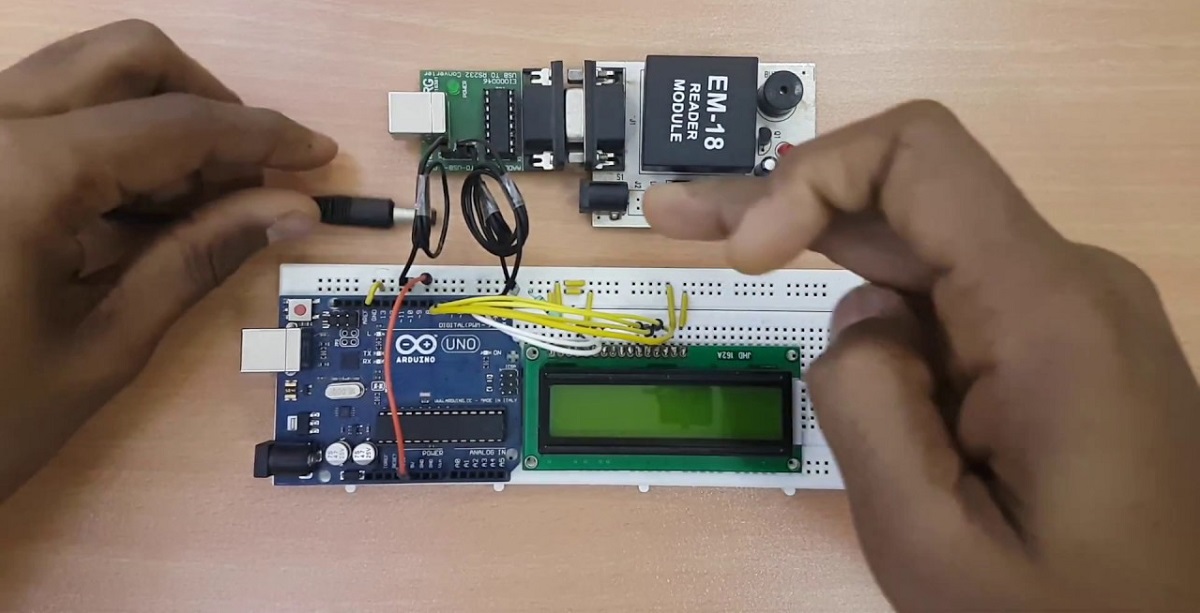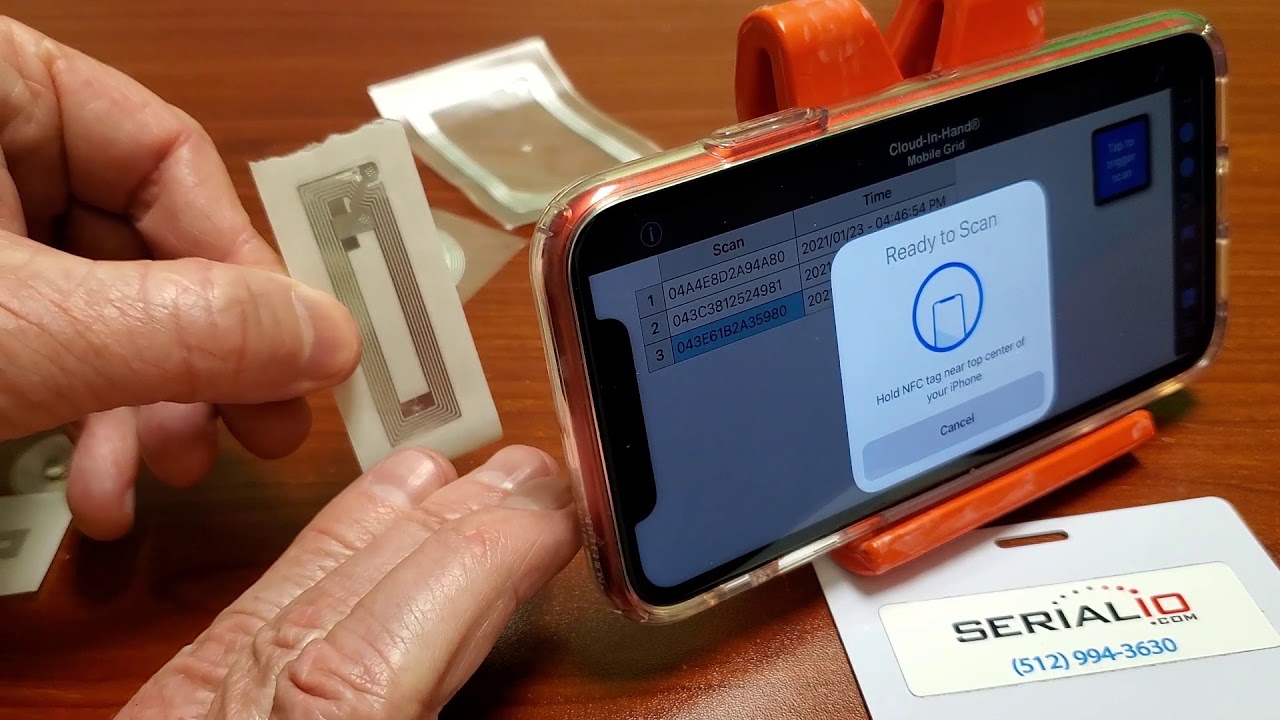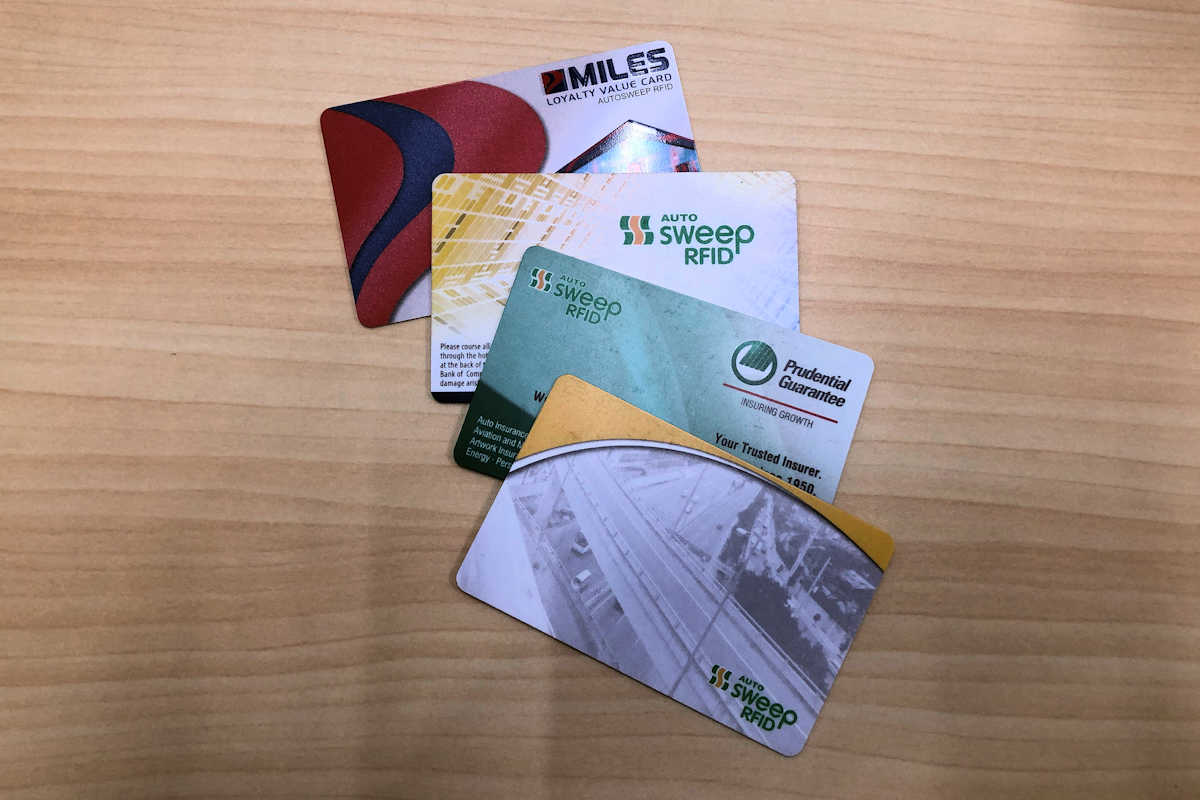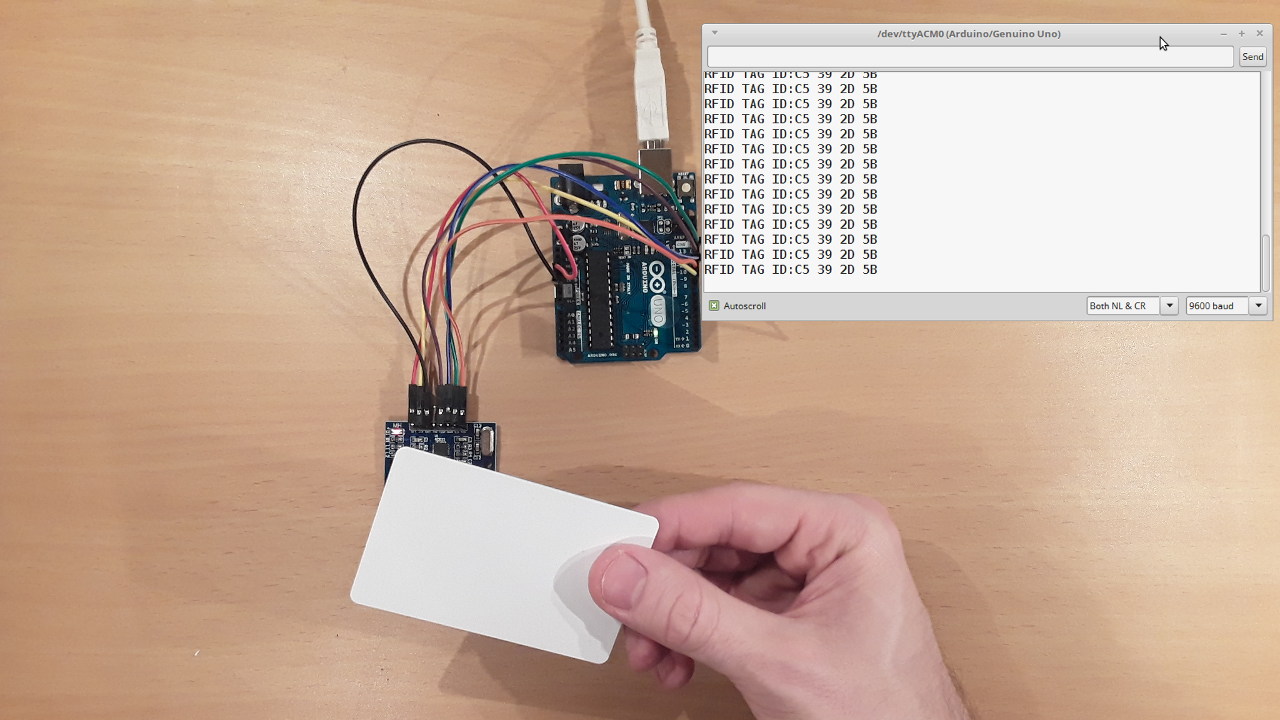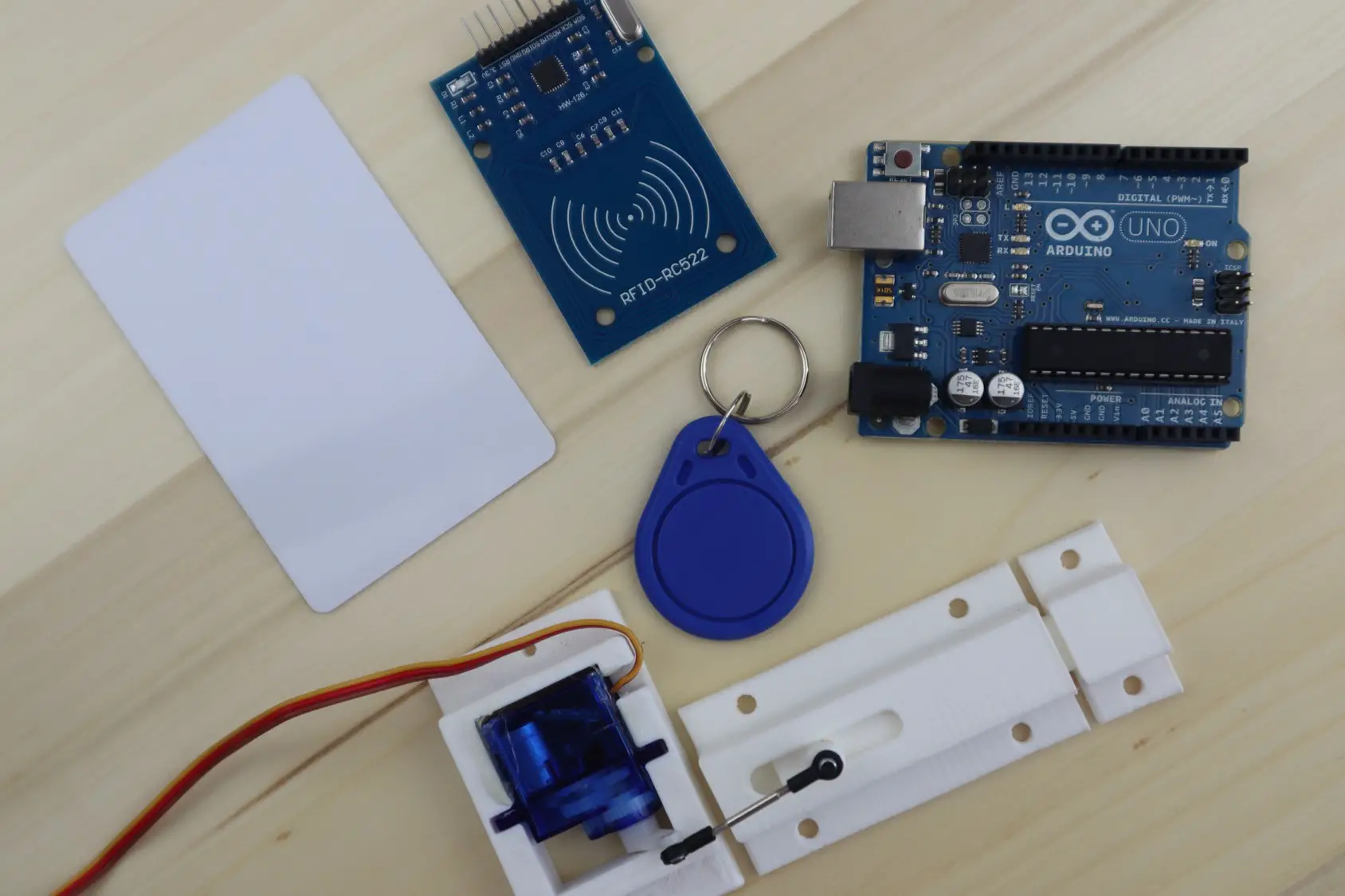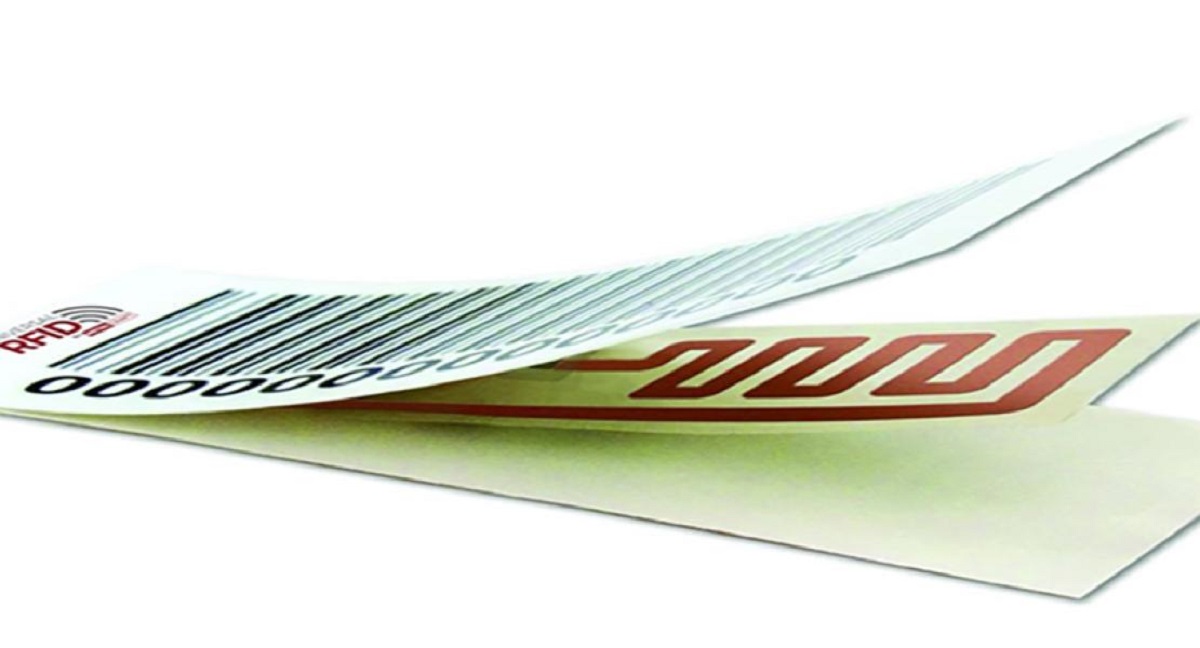Introduction
Welcome to the world of RFID technology, an innovative system that has revolutionized the way we track and manage objects. At the heart of this technology lies the RFID reader, a powerful device that plays a crucial role in enabling seamless data capture and communication. Whether you realize it or not, RFID readers have become an integral part of our daily lives, quietly working behind the scenes in various industries and applications.
RFID, or Radio Frequency Identification, is a wireless technology that uses electromagnetic fields to automatically identify and track objects. It allows for quick and efficient data capture without the need for line-of-sight contact or manual scanning. RFID readers act as the gateway between the physical world and the digital realm, facilitating the transfer of information between RFID tags and the central database or system.
Imagine being able to effortlessly scan and identify multiple items in seconds, accurately inventorying stock in a warehouse, or seamlessly tracking luggage at an airport. These amazing capabilities are possible thanks to RFID technology and the intelligent RFID readers that power it.
In this article, we will delve into the world of RFID readers, exploring their essential components, functionalities, and applications. We will also discuss the benefits and limitations of using RFID readers, shedding light on the advantages and challenges that come with this technology. So, if you are curious to learn more about the fascinating world of RFID technology and how RFID readers make it all possible, then read on.
Definition of an RFID Reader
An RFID reader, also known as an RFID interrogator, is a device that is used to read information from and write information to RFID tags. It is an essential component of the RFID system, as it enables the communication between the RFID tags and the central database or system. The RFID reader emits radio waves and when an RFID tag comes within its range, the reader captures the data stored on the tag and transfers it to a computer or a server for further processing.
RFID readers are designed to support different types of RFID tags, including passive tags, active tags, and semi-passive tags. Passive RFID tags do not have an internal power source and rely on the energy transmitted by the RFID reader to power them up and transmit data. Active RFID tags, on the other hand, have their own power source and continuously emit a signal that can be detected by the RFID reader. Semi-passive RFID tags also have their own power source, but they only use it when they are being interrogated by the RFID reader.
RFID readers come in various forms, ranging from handheld devices to fixed readers installed in specific locations. Handheld RFID readers are portable and allow for easy mobility, making them suitable for applications such as asset tracking and inventory management. Fixed RFID readers, on the other hand, are stationary and are typically used in areas where items pass through, such as entry gates or checkout counters.
RFID readers can operate on different frequency bands, including low frequency (LF), high frequency (HF), and ultra-high frequency (UHF). The choice of frequency depends on the specific application requirements, such as read range, data transfer speed, and compatibility with RFID tags.
Overall, an RFID reader serves as the interface between the physical world and the digital realm, enabling seamless data communication and facilitating efficient tracking and identification of objects. Its ability to read and write data to RFID tags makes it a vital component in a wide range of industries and applications, including logistics, transportation, healthcare, retail, and many more.
How an RFID Reader Works
RFID readers utilize radio frequency waves to communicate with RFID tags and retrieve information from them. The process involves several key steps that enable the seamless transmission and reception of data:
- Powering the RFID Tag: Passive RFID tags do not have their own power source, so they rely on the energy emitted by the RFID reader to power up. When the RFID reader emits an RF signal, it induces an electric current in the tag’s antenna, allowing it to activate.
- Signal Transmission: Once the RFID tag is powered up, it responds by backscattering the energy from the RFID reader. This backscattered energy contains the encoded data stored within the tag. The tag modulates the backscattered signal to relay its unique identification information, sensor data, or any other desired data.
- Signal Reception: The RFID reader captures the backscattered signal emitted by the RFID tag using its antenna. The antenna acts as a receiver, picking up the modulated radio frequency waves transmitted by the tag.
- Decoding the Signal: After capturing the signal, the RFID reader decodes the information embedded within it. It interprets the modulated signal to extract the tag’s identification number, sensor data, or any other relevant data.
- Data Processing: Once the RFID reader decodes the signal, it forwards the received data to a computer or a server for further processing. The data can be analyzed, stored, or integrated into existing systems for various applications, such as inventory management, access control, or supply chain optimization.
To establish communication between the RFID reader and the tags, it is important to note that they must operate on the same frequency and use compatible protocols. The RFID reader emits RF signals at a specific frequency, while the RFID tags are designed to respond to signals within a certain range of frequencies.
Overall, the functioning of an RFID reader involves the transmission of RF waves, the activation of the RFID tag, the reception and decoding of the tag’s response, and the subsequent processing of the retrieved data. This seamless process enables efficient and automated data capture, simplifying various tasks and processes across industries and applications.
Components of an RFID Reader
An RFID reader consists of several key components that work together to enable efficient communication with RFID tags. These components include:
- Antenna: The antenna is an essential part of the RFID reader as it is responsible for transmitting and receiving radio frequency signals. The size and design of the antenna depend on the intended application and the frequency band of operation.
- Transceiver: The transceiver is a device that combines a transmitter and a receiver. It is responsible for generating the radio frequency signals that are transmitted to the RFID tags and for capturing the signals emitted by the tags. The transceiver also amplifies and filters the signals for better performance.
- Microprocessor: The microprocessor is the brain of the RFID reader. It controls the overall operation of the reader, including signal processing, data encoding/decoding, and communication with external devices. The microprocessor also executes the firmware or software that enables the reader’s functionalities.
- Memory: The memory component in an RFID reader is used to store data temporarily or permanently. It can be used to store configuration settings, captured data, or any other relevant information required by the reader.
- Power Supply: The power supply provides the necessary electricity to operate the RFID reader. Depending on the type of RFID reader, it can be powered by batteries, an external power source, or even through Power-over-Ethernet (PoE) technology.
- User Interface: The user interface allows for interaction with the RFID reader. It can include components such as display screens, buttons, and indicators that provide feedback and enable configuration settings or data retrieval.
- Interface: The interface enables the connection between the RFID reader and external devices, such as computers or servers. Common interface options include USB, Ethernet, Wi-Fi, and Bluetooth, allowing for seamless integration with existing systems.
In addition to these components, advanced RFID readers may include additional features such as built-in sensors, multiple antenna ports for increased coverage, or support for advanced security protocols. The specific components and features vary depending on the manufacturer, model, and intended use of the RFID reader.
By integrating these components, RFID readers provide a powerful and versatile tool for capturing and processing data from RFID tags, enabling businesses to streamline operations, improve productivity, and enhance overall efficiency.
Types of RFID Readers
RFID readers come in various types, each designed to meet specific needs and requirements. The most common types include:
- Handheld RFID Readers: Handheld RFID readers are portable devices that allow users to move around and scan RFID tags in different locations. They are commonly used in applications such as asset tracking, inventory management, and field service operations. Handheld readers provide flexibility and convenience, enabling users to capture data on-the-go.
- Fixed RFID Readers: Fixed RFID readers are stationary devices that are typically installed in specific locations, such as entry gates or conveyor belts. They provide a fixed reading zone, allowing for automated data capture as items pass through the designated area. Fixed readers are commonly used in applications such as access control, industrial automation, and retail point-of-sale systems.
- Integrated RFID Readers: Integrated RFID readers are designed to be embedded or integrated into other devices or equipment. They are commonly found in applications such as printers, kiosks, and mobile devices, where RFID capabilities are required as part of the device’s functionality. Integrated readers provide a seamless and compact solution without the need for additional external hardware.
- Long-Range RFID Readers: Long-range RFID readers, also known as portal readers or reader gates, are designed to cover a larger reading range compared to other types of readers. They can capture data from RFID tags located several meters away, making them ideal for applications such as vehicle identification, logistics, and warehouse management.
- Desktop RFID Readers: Desktop RFID readers are compact devices that are commonly used in small-scale applications or desktop environments. They are suitable for tasks such as asset tracking, document management, and library systems. Desktop readers are easy to install and provide a cost-effective solution for organizations with limited space and budget.
Each type of RFID reader has its own advantages and limitations, and the choice depends on factors such as the environment, read range requirements, mobility, and the specific application needs. Understanding the different types of RFID readers is essential for selecting the most suitable device to meet the unique requirements of your business or project.
Applications of RFID Readers
RFID readers have found a wide range of applications across various industries, revolutionizing processes and improving efficiency in numerous ways. Here are some key areas where RFID readers are commonly used:
- Inventory Management: RFID readers are extensively used in inventory management systems to accurately track and manage stock levels. By quickly scanning RFID tags attached to items, businesses can automate inventory counts, monitor stock movements, and streamline the replenishment process.
- Asset Tracking: RFID readers play a crucial role in asset tracking, allowing businesses to locate and monitor valuable assets. Whether it’s tracking equipment, tools, or vehicles, RFID readers provide real-time visibility and enable businesses to efficiently manage their assets, prevent loss, and improve utilization.
- Supply Chain Management: RFID readers are used to optimize supply chain operations by providing real-time tracking and visibility of goods. From manufacturing to distribution, RFID readers facilitate the accurate and efficient tracking of products, ensuring seamless inventory flow, reducing errors, and improving overall logistics efficiency.
- Access Control and Security: RFID readers are widely used for access control and security purposes. By using RFID-enabled identification cards or key fobs, RFID readers can grant or restrict access to secure areas, buildings, or events. This enhances security, eliminates the need for manual identification, and provides a convenient and efficient access management solution.
- Retail and Point of Sale (POS): RFID readers have revolutionized the retail industry by enabling faster and more accurate product scanning at the point of sale. With RFID tags attached to products, checkout processes are expedited, inventory accuracy is improved, and stock management becomes more efficient, resulting in enhanced customer satisfaction and streamlined operations.
- Healthcare: RFID readers are used in healthcare settings to track medical equipment, manage inventory, and improve patient safety. By tagging medical supplies, RFID readers can quickly locate or update inventory levels, facilitate efficient equipment maintenance, and ensure accurate patient-related data is readily accessible.
- Animal Tracking: RFID readers are utilized in the agricultural industry for animal tracking and management. By attaching RFID tags to livestock, farmers can efficiently track and monitor animals, manage their health records, and optimize breeding and feeding programs.
- Waste Management: RFID readers are employed in waste management systems to enable efficient collection, sorting, and disposal of waste. By tagging waste bins or recycling containers, RFID readers can track waste volumes, optimize collection routes, and ensure proper segregation and disposal.
These are just a few examples of the diverse applications of RFID readers. From streamlining operations to enhancing security and optimizing processes, RFID readers continue to play a crucial role in numerous industries, enabling businesses to improve efficiency and gain a competitive edge.
Benefits of Using RFID Readers
Using RFID readers offers numerous benefits across a wide range of industries and applications. Some of the key advantages include:
- Efficiency and Accuracy: RFID readers enable fast and automated data capture, eliminating the need for manual scanning or line-of-sight contact. This significantly improves efficiency, reduces human error, and ensures accurate and reliable data collection.
- Real-time Visibility: RFID readers provide real-time visibility into inventory, assets, or processes. This visibility allows for better decision-making, improved planning, and timely response to changes or issues.
- Increased Productivity: By automating data capture and reducing manual tasks, RFID readers streamline operations and free up valuable resources. This leads to increased productivity, allowing businesses to focus on value-added activities and strategic initiatives.
- Enhanced Security: RFID readers enable secure access control systems and asset tracking, enhancing security measures in various environments. They provide a reliable and efficient way to authenticate and monitor individuals’ access and track valuable assets.
- Improved Customer Experience: In retail environments, RFID readers facilitate faster checkout processes, reducing waiting times and enhancing the overall customer experience. Accurate inventory management also ensures products are readily available, avoiding stockouts and satisfying customer demands.
- Inventory Optimization: RFID readers enable accurate and timely inventory counts, eliminating the need for manual stocktakes. This leads to improved inventory accuracy, better demand forecasting, reduced stockouts, and optimized replenishment strategies.
- Supply Chain Visibility: RFID readers provide real-time tracking and tracing capabilities, improving supply chain visibility. This enhances transparency, reduces delays, and allows for better coordination among different stakeholders in the supply chain.
- Cost Savings: RFID readers help reduce costs by eliminating manual processes, reducing errors, minimizing stockouts, and optimizing inventory levels. They improve operational efficiency and contribute to overall cost savings in areas such as labor, inventory holding, and loss prevention.
- Data Insights: By capturing accurate and comprehensive data, RFID readers enable businesses to gain valuable insights into their operations. This data can be analyzed to identify process inefficiencies, optimize workflows, and make data-driven decisions for continuous improvement.
These benefits demonstrate the transformative impact that RFID readers can have on businesses’ operations, enabling them to achieve operational excellence, increase profitability, and deliver an enhanced experience to their customers.
Limitations of RFID Readers
While RFID readers offer significant advantages, it is important to be aware of their limitations as well. Some of the key limitations of RFID readers include:
- Range Limitation: RFID readers have a limited reading range, which can vary depending on the frequency band and the type of RFID tags used. For applications that require long-distance reading, additional infrastructure or specialized readers may be necessary.
- Incompatibility: RFID readers and tags may operate on different frequencies or use different protocols, making them incompatible with each other. This can pose challenges when integrating RFID systems or when working with tags from different vendors.
- Cost: RFID readers can be more expensive than traditional scanning or barcode systems. The cost of the readers, tags, and infrastructure may require an upfront investment that needs to be factored into the overall budget for implementing RFID technology.
- Environmental Factors: The performance of RFID readers can be affected by environmental factors such as metal interference, liquids, or electromagnetic interference. These factors can impact the accuracy and reliability of data capture, necessitating careful planning and optimization of the RFID system’s deployment.
- Data Collision: In situations where multiple RFID tags are present within the reading area of a reader, there can be data collision or interference. This can result in read errors or incomplete data capture, requiring additional measures such as anti-collision algorithms to mitigate the issue.
- Privacy and Security Concerns: RFID technology raises privacy and security concerns, particularly when used in applications involving personal or sensitive data. Unauthorized reading of RFID tags, data interception, or tag cloning are potential risks that need to be addressed through appropriate security measures.
- Integration Complexity: Integrating RFID technology into existing systems or workflows can be complex and require additional customization or modifications. Ensuring seamless integration and interoperability with legacy systems may involve additional effort and resources.
It is important to carefully consider these limitations and address them to ensure successful implementation and optimal use of RFID readers. Understanding these limitations helps businesses make informed decisions and develop strategies to overcome these challenges while reaping the benefits of RFID technology.
Conclusion
RFID readers are the indispensable backbone of RFID technology, enabling efficient data capture and communication between RFID tags and the digital world. These powerful devices have transformed various industries and applications, offering numerous benefits such as increased efficiency, real-time visibility, and improved security. From inventory management and supply chain optimization to access control and asset tracking, RFID readers have revolutionized how businesses operate.
While RFID readers provide significant advantages, it is important to consider their limitations. Factors such as range limitations, compatibility, cost, environmental factors, and privacy concerns need to be carefully addressed when implementing RFID systems. Overcoming these challenges requires proper planning, optimization, and integration with existing systems.
As technology continues to evolve, RFID readers are likely to become even more advanced, offering improved performance, increased functionality, and enhanced security features. Future developments may enable longer reading ranges, more robust data capture, and seamless integration with other emerging technologies such as IoT and AI. Organizations are encouraged to stay updated with the latest trends and advancements to take full advantage of the potential that RFID readers have to offer.
In conclusion, RFID readers have become crucial tools for businesses across various industries, enabling automation, streamlining operations, and providing valuable insights through real-time data capture. By understanding the capabilities, limitations, and applications of RFID readers, businesses can harness the power of this technology to drive efficiency, enhance security, and gain a competitive edge in today’s dynamic and fast-paced world.







